Types of faucets and mixers: an overview
What types of faucets and faucets are currently in use? We have to perform an express review of the most popular solutions and mention their key features. So go.
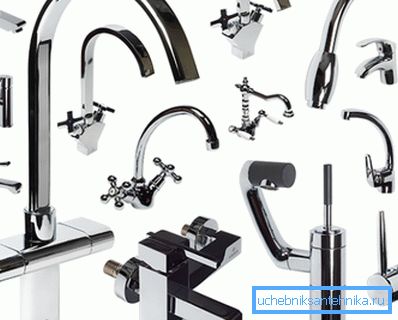
Classification methods
To begin, find out by what signs can be classified types of water taps and faucets.
- The number of connected water pipes. Actually, here the distinction is inherent in the very name of the device: the water dispensing valve is designed to control the flow only with cold or only hot water; the mixer allows you to meter the flow of both water pipes, providing the optimum temperature of the mixture.
- Material, from which the sanitary device is made.
Note: with approximately the same functionality and durability, the price of devices from different materials may differ several times.
- Mounting method.
- Water control method.
The difference between the tap and the mixer doesn’t seem to require special comments, so we’ll focus on the last three points.
Materials
What options are possible?
Brass. Brass taps for plumbing are most common due to their low cost, chemical and corrosion resistance, as well as the simple processing of a relatively soft metal. In most cases, brass is protected by a decorative chrome-nickel coating, which, however, does not affect the durability of products.
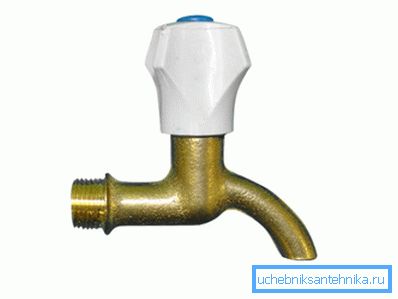
Bronze. Decorative cases are made of it - in particular, antique - of water taps and mixers. Bronze is one of the most hard and wear-resistant metals, which guarantees a high service life of moving parts of sanitary appliances.
Stainless steel also favorably differs from brass by its high wear resistance. In addition, the surface of the polished stainless steel is easily cleaned, which allows it to be used to create the so-called dairy (food) stop valves.
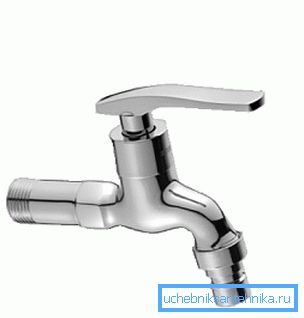
To clarify: for obvious reasons, wear resistance is important only for moving structural elements in contact with each other. If so - bronze or stainless steel increases the life of the device only if not only the case is made of them, but also the cranes. For a single-lever mixer with a polymer-ceramic cartridge, the strength of the metal is important except when falling to the floor during installation.
Silumin (aluminum alloy with silicon). Water taps made from it for the kitchen and bathroom (fortunately, it is almost never used for faucets) are distinguished by low price and equally low mechanical strength, which does not always allow the device to at least survive the installation. The obvious instruction is to see such a product, move away from it as far as possible.
Ceramics. Cases of some domestic bathroom faucets in the 70-90s of the last century were made from it. A characteristic feature of these mixers was the ability to explode with a sharp change in water temperature.
Plastic (PVC). Cheap plastic kitchen faucets (usually made in China) to this day can be found on sale. Surprisingly, they have no serious shortcomings besides a shabby appearance after half a year of operation.
Curiously: in the price lists of plumbing stores, sometimes you can find cast-iron water taps. However, in the real world, such products do not exist: this name usually hides cast-iron screw valves for liner connections.
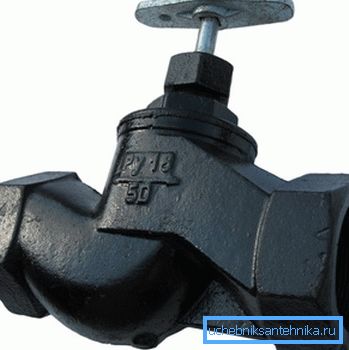
Mount
There are only two options.
| Mount | Description |
| Wall mounted | A faucet or faucet mounted on a wall rests on the threads of a rigidly fixed liner or a so-called water outlet. In this way, most of the bathroom faucets and all kitchen sinks are mounted. |
| Onboard | The body of the faucet or faucet is attached to the hole in the sink, sink or bath. Rigid or flexible connections for the mixer provide only a water supply. |
Control
The controls of the water tap are responsible only for adjusting the water pressure. The mixer head, respectively, is regulated for each water - cold and hot water; In addition, they often have switches from a gander (spout) to a shower or a dishwasher.
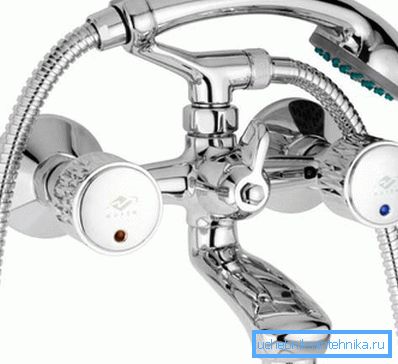
Curiously: a three-way water tap, designed only for cold or hot water and allowing you to switch from gus to shower, is not made by any industrial enterprise. Meanwhile, in summer showers (for example, in the country) these simple devices would be in demand.
Head adjustment
It can be carried out:
- Screw kranbuksami with rubber pads. These cranes are easily repaired with their own hands with a minimum set of tools; however, the service life of the gasket and the gland or rubber seal around the stem is poor. Rapid wear of the threads on the brass rod also does not add enthusiasm.
- Ceramic Kranbuksami. They are fully compatible with screw; however, a pair of ground ceramic plates with through holes are responsible for adjusting the head. When turning the tap, the holes are fully or partially aligned, opening the way for water.
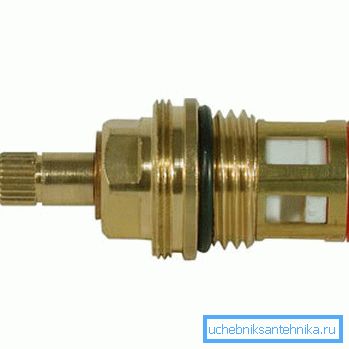
This type of faucet is convenient to use and durable, but is sensitive to the presence of sand and scale in the water; owners are strongly recommended to install coarse filters.
- A cartridge that allows you to control both pressure and temperature with a single knob. The cartridge is a further development of the idea of ceramic cranes: additional holes in the plates and the mobility of one of them within the limits of the plane provides flexibility of adjustment.
- Thermostat. Thermostatic mixer allows you to maintain the desired water temperature. The principle of its operation is based on the ability of liquids and gases to expand when heated: when a predetermined temperature is reached, an expanding bellows with a working medium covers the flow of hot water.
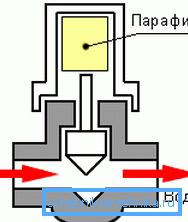
However: the electronic circuit with a thermocouple and solenoid valves can perform the same function.
- The solenoid valve also uses a sensory tap, in which the water supply is activated when a moving object enters the working area of the sensor. If water taps with an IR sensor for opening water are installed only on cold water, the sensor faucets also use thermostatic temperature control.
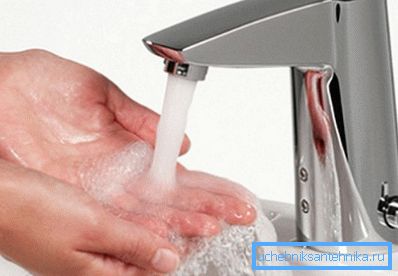
- Finally, the water taps are cork or ball, duplicating the valve device of the appropriate types. In essence, these products differ from the valve only in the presence of a spout or choke instead of one of the threads.
Useful: the labeling of water faucets of these types usually contains the size of the thread to be attached.
Switch to shower or watering can
It is also implemented in several ways.
- Cork switches were used in the 1950s – 70s of the last century and were exceptionally fault tolerant, but they required considerable effort to be triggered.
- The mechanism with a keg equipped with a pair of gaskets is flawed initially: the gaskets are constantly torn off and clogging up or the shower, and the wear of the guides in the mixer body causes the mechanism to jam.
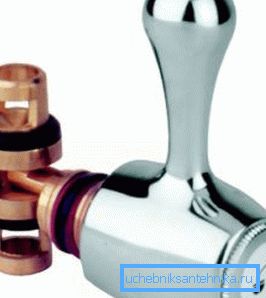
- A push button switch with a rubber or metal valve often leaks due to a loose seat.
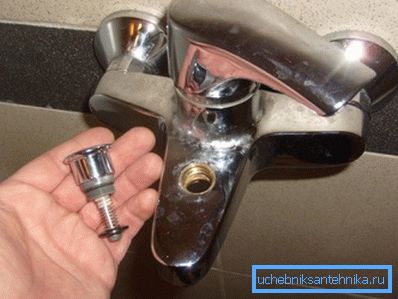
The only absolutely reliable construction is a ceramic switch, a device similar to ceramic Kranbukse. Its characteristic feature is the ability to rotate the handle a full turn.
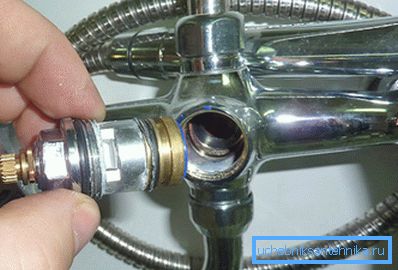
Conclusion
We hope that our miniature review of the modern plumbing market will be able to help the reader in choosing the optimal solution for their own needs. Additional thematic information will be offered by the video in this article. Successes!